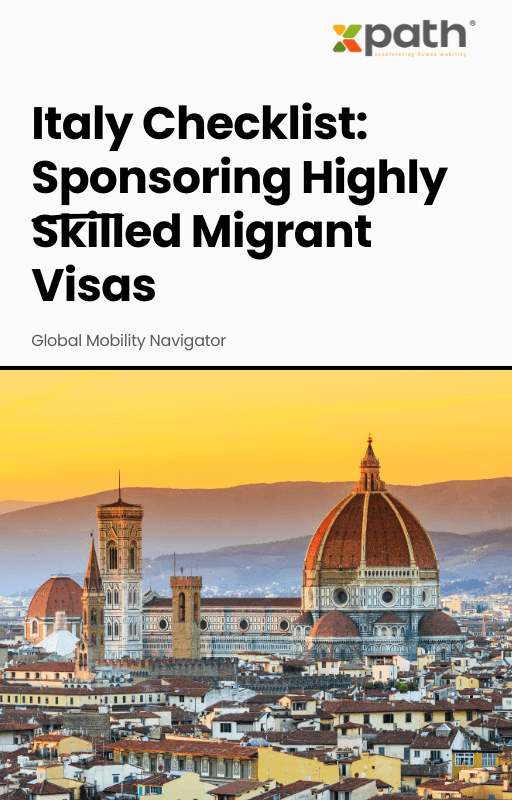Italy Checklist: Sponsoring Highly Skilled Migrant Visas
Grab a copy of a guide to international employee relocation
View E-bookIn today’s ever-evolving business landscape, organizations are increasingly embracing remote work and exploring opportunities to expand their operations globally. With 65% of employees expressing a desire to work from home permanently, creating a successful global mobility program has become a top priority for employers. This article will provide valuable insights into the world of global mobility and offer practical guidance on how to develop an effective program that harnesses the potential of remote work.
Global mobility refers to the strategic movement of employees and their dependents across borders for professional, financial, and personal growth. By relocating employees to different countries, organizations can tap into new consumer markets, adapt to local business environments, and foster a deeper connection with diverse cultures. Global mobility also offers numerous benefits for employees, such as a better work-life balance, improved mental health, and enhanced personal development.
To successfully manage global mobility, organizations need a comprehensive global mobility program in place. This program involves overseeing the entire process of employee relocation, including travel arrangements, accommodation, and other essential aspects to ensure a seamless transition. By leveraging technology and global mobility software, organizations can streamline the management of global mobility programs and ensure the well-being of their remote employees.
Effective global mobility management is crucial for organizations looking to reap the benefits of a remote workforce and expand their business globally. By implementing a well-designed global mobility program, organizations can achieve the following:
Developing a successful global mobility program requires careful planning, engagement, and consideration of various factors. Here are essential steps to create an effective program:
Employees play a vital role in the success of a global mobility program. It is essential to ensure that employees are aware of the program and feel engaged throughout the process. This can be achieved through:
Managing global teams and employee relocations comes with its own set of challenges. Organizations must consider compliance requirements, security risks, and cultural differences. It is crucial to:
Global mobility software can greatly assist organizations in managing international assignments and remote teams. These tools provide solutions for challenges related to distributed teams and offer features such as visa support, relocation assistance, and communication coordination.
Consistency is key when expanding a business internationally. Organizations should ensure that the brand ideals and values established in their home country seamlessly integrate into global offices. This can be achieved by:
Expanding to a new country requires organizations to be mindful of cultural differences. What works in one country may not be suitable or acceptable in another. To successfully navigate cultural challenges:
Developing a successful global mobility program empowers organizations to tap into new markets, access untapped talent, and enhance their brand presence worldwide. By incorporating remote work and leveraging the potential of global mobility, organizations can unlock new revenue streams, increase brand awareness, and attract top talent from across the globe.
Embrace the opportunities offered by global mobility, and let your organization thrive in the era of remote work. With the right strategies, tools, and a commitment to cultural understanding, you can build a successful global mobility program that drives your organization’s growth and success.

Italy Checklist: Sponsoring Highly Skilled Migrant Visas
Grab a copy of a guide to international employee relocation
View E-book